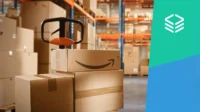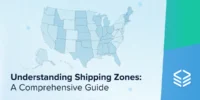The challenges facing ecommerce and the supply chain in 2021 have been well documented: unreliable and delayed shipping and a backlog of container ships waiting to get into ports. Even the cost of packaging, including cardboard and plastic, has risen this year.
As we head into the holiday season, these challenges are likely to get worse, not better. At the same time, consumers are positioned to spend more than ever. The National Retail Federation estimates total holiday sales in November and December will beat 2020 by 8.5-10.5 percent, and online and other non-store sales will increase between 11-15 percent over 2020.
While all of this will make for a challenging holiday shopping season, it’s unlikely the supply chain issues are going to resolve themselves after this season ends.
But that doesn’t mean your brand is forced to sit back and weather the storm. Here are three things you can do now to set yourself up for ecommerce success going into 2022 and beyond.
1. Use data to optimize your network
The days of having a single warehouse and shipping across the country are over — especially now that customers expect fast and affordable shipping.
Now, savvy retailers use order management software and networks of fulfillment centers to ensure that goods are closer to consumers. Flowspace has a distributed network of hundreds of fulfillment centers and uses an algorithm to optimize your fulfillment network and determine which configuration of those fulfillment centers will offer the most optimal efficiencies to a retailer based on its own data.
Not only does this ensure faster shipping and reduced cost, but it’s also better for the environment. MIT found that built-out logistics networks can reduce transportation-related emissions by 50%. In fact, Flowspace’s Network Optimization has been named Sustainability Service of the Year.
2. Perfect your omnichannel strategy
Omnichannel fulfillment gives the consumer the ability to purchase from your brand the way they want — whether that’s on your website or through a third-party marketplace like Amazon. Having an omnichannel strategy is key to appealing to consumers, and 9 out of 10 customers say they prefer the omnichannel experience.
Providing your customer with a top-notch experience across all of your channels is key to success in 2022 and beyond, but delivering that great experience is easier said than done.
Just because your customers are placing orders on multiple channels doesn’t mean you can’t manage all your orders in one platform.
A third-party logistics provider like Flowspace can mitigate many omnichannel challenges by using established channels and existing fulfillment partners. A third-party logistics provider can also provide technology to make the entire buying experience seamless, whether it happens in a physical store or online.
3. Make sure you have access to real-time information
We’ve all been learning that no matter how good your projections are, there are always outliers and issues that can wreak havoc on your inventory.
To make sure you can get ahead of any issues, you’ll want to track inventory in real time across all fulfillment centers to see how you’re trending and ensure you can meet customer demand.
Flowspace allows you to seamlessly integrate with your online store and platforms, including Shopify and Amazon, and track real-time inventory visibility, low inventory alerts, and a predictive view of remaining product. Everything is in one platform so you can better track when online sales are made and when orders have been received and are being shipped out.
To find out how Flowspace can help you prepare for success in 2022 and beyond, get in touch.






